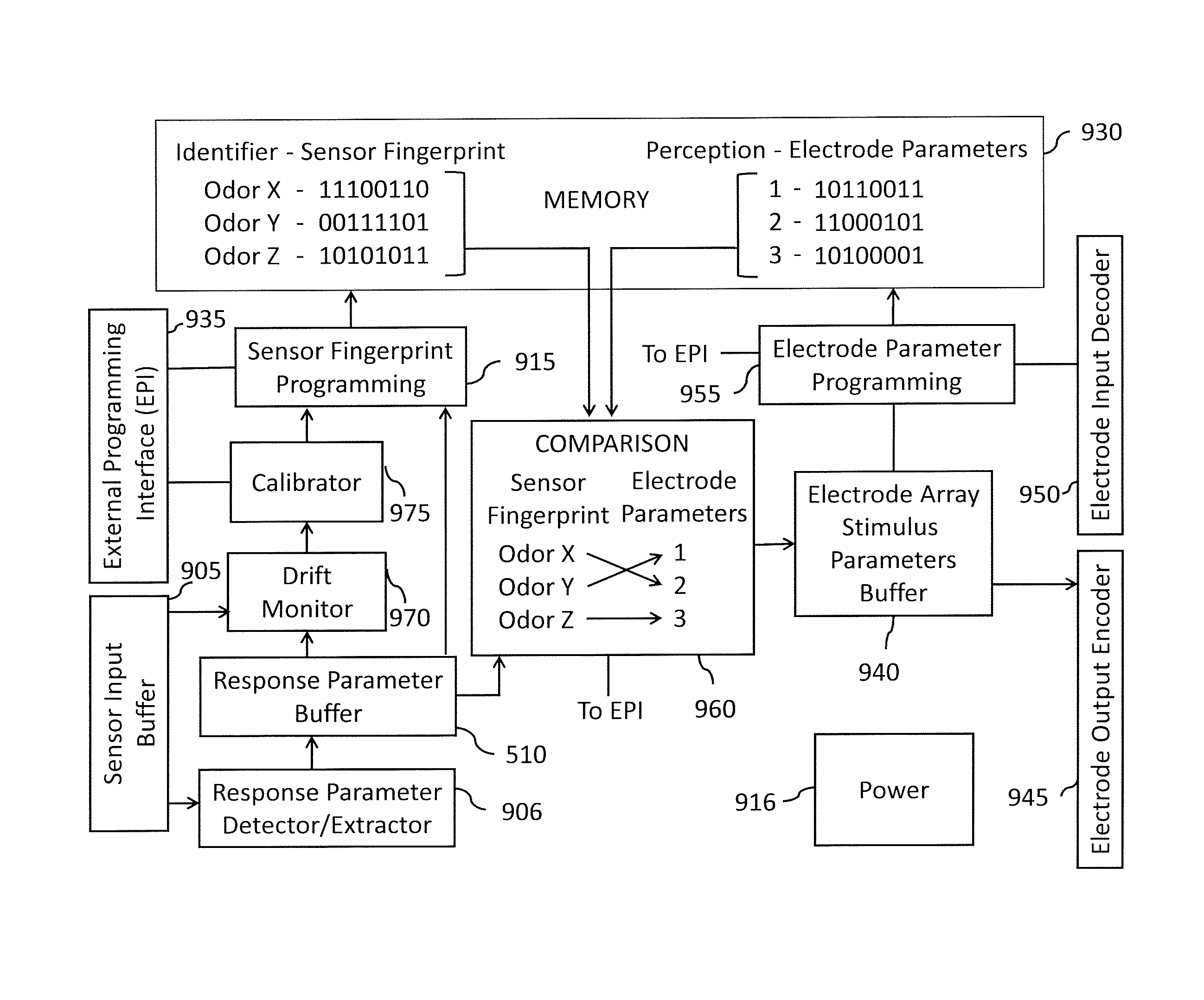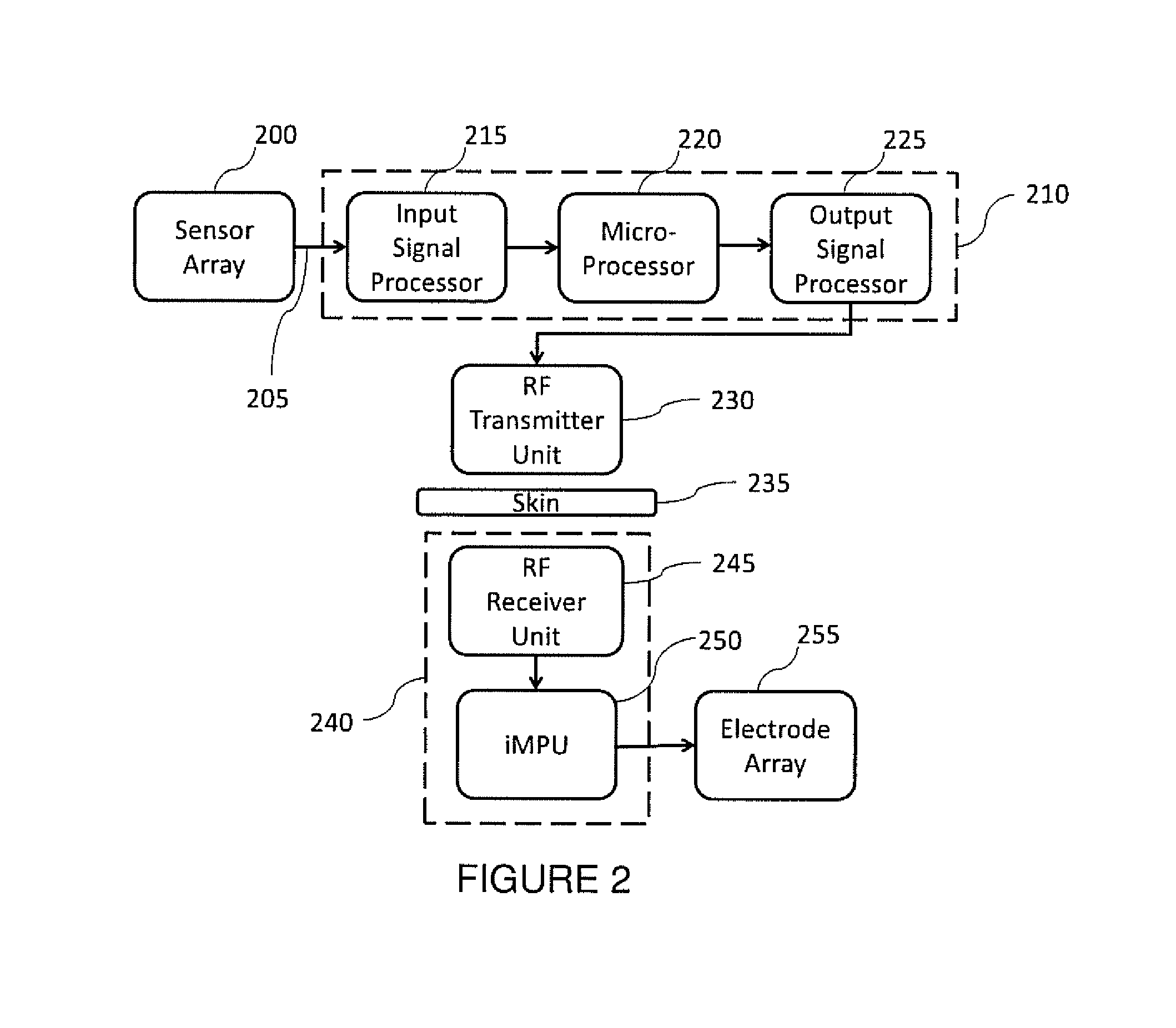Olfactory implant system
a technology of implanted ears and implants, which is applied in the field of prosthetic devices, can solve the problems of no known means for recreating this important sense, and all five human senses are treatable by bioelectrical stimulation, and achieve the effect of improving or reviving the perception of smell
- Summary
- Abstract
- Description
- Claims
- Application Information
AI Technical Summary
Benefits of technology
Problems solved by technology
Method used
Image
Examples
Embodiment Construction
[0025]Referring now to the drawings, and more particularly to FIG. 1, there is shown a schematic of basic neurophysiology of the human or animal olfactory system.
[0026]Olfactory receptors 100 located in the olfactory epithelium 110 line the nasal cavity. When volatile or airborne substances bind to olfactory receptors 100 capable of receiving one or more particular airborne ligands, olfactory information from the activated odorant receptors 100 is passed to localized regions in the olfactory bulb 120. In particular, the projecting nerve fibers have dendrites which synapse onto particular well-defined microregions of the olfactory bulb 120 called glomeruli 130. Although the receptors 100 for a given ligand or family of ligands appear dispersed with little spatial organization across the olfactory epithelium, the nerve endings from the same receptors 100 converge on the same glomerulus. Different receptor subtypes (e.g. A, B, and C) connect to or associate with specific glomeruli 130 ...
PUM
 Login to View More
Login to View More Abstract
Description
Claims
Application Information
 Login to View More
Login to View More - R&D
- Intellectual Property
- Life Sciences
- Materials
- Tech Scout
- Unparalleled Data Quality
- Higher Quality Content
- 60% Fewer Hallucinations
Browse by: Latest US Patents, China's latest patents, Technical Efficacy Thesaurus, Application Domain, Technology Topic, Popular Technical Reports.
© 2025 PatSnap. All rights reserved.Legal|Privacy policy|Modern Slavery Act Transparency Statement|Sitemap|About US| Contact US: help@patsnap.com



